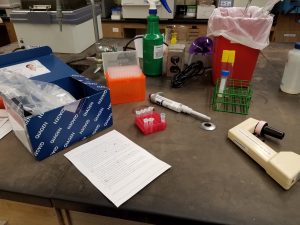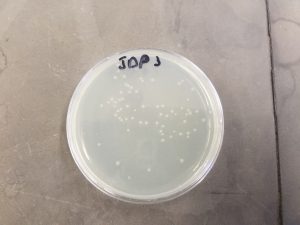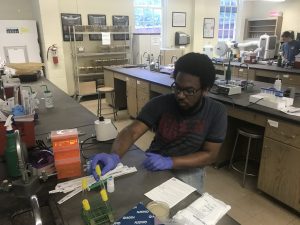By Jason D. Pough II ’19
This summer I am working with Professor Michael Wolyniak to create an experiment for a laboratory that will be part of the future Biochemistry classes. Moreover, we are working on creating and purifying the Myf-5 Myogenic Regulatory Factor protein to assist with Professor Kristin Fischer’s research in regenerative skeletal muscle tissue as a part of creating the lab. Myf-5 is one of several Myogenic Regulator Factors that is involved with differentiating and creating muscle cells during Myogenesis. For Professor Fischer’s research, we plan to take a plasmid containing Mus musculus DNA and mutate it using site-directed mutagenesis in order to create a mutant Myf-5 protein that hopefully will aid in skeletal muscle regeneration research in conjunction with Professor Fischer’s research.
The overall project will aid in creating a Biochemistry laboratory by familiarizing ourselves with the techniques and methods used to carry out the Myf-5 experiment, and we will create methods and procedures for future biochemistry students to follow. One instance is with the aforementioned site-directed mutagenesis where, much like Real Time PCR, one uses primers and enzymes, yet we mutate specific sections of DNA. The mutated DNA is then inserted into a host bacterium where it will clone into a plentiful amount of bacteria with the mutated plasmid. Another instance is with the MinION Sequencer, provided by Oxford Nanopore, which uses thousands of protein pores to read the nucleotide sequence of injected DNA. The MinION Sequencer will be used to determine if the plasmids actually mutated and thus create a mutated protein. We hope that the results will not only aid Professor Fischer’s research, but also be the roots of future biochemistry laboratories and aid prospective Biology and Biochemistry and Molecular Biology majors.



